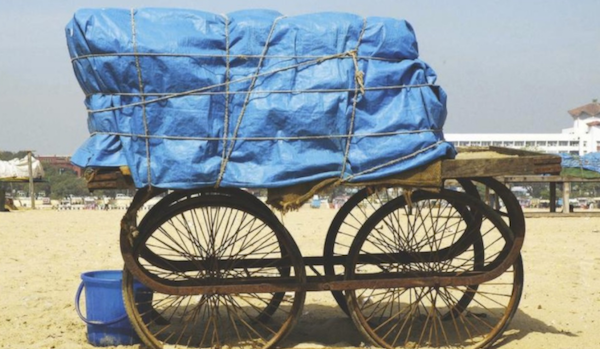
SHELTER FROM THE STORM

India: a country so deeply rooted in the textiles industry that it is impossible to hear the name without imagining a land of antique woodblocks, fine cottons, exceptional crafts and colourful silks. But there is another fabric that is integral to life here. It weaves between the buildings, stretches through the trees, covers, conceals and protects from the sun or the heavy rain of the monsoon. The bright blue of tarpaulin spreads through the cities. It fills the skyline with construction and aspiration while providing shelter for the inhabitants down below.

Tarpaulin originated as a canvas or cotton that was treated to provide additional strength and waterproofing. Early examples show flax linen coated in linseed oil created from the flax seeds, providing the protective layer. Although heavy-duty flax canvases are still available, the name ‘tarpaulin’ now covers a multitude of synthetics, laminate sheets, plastic and vinyl.

Historically this material was claimed by the maritime community as a ‘tarred palling’, a waxed canvas sheet that was pulled (from the word ‘pall’ meaning cover) over objects on deck. The durable and waterproof nature of these materials became essential in protecting humans and objects against the elements, making tarpaulin a valuable architectural fabric for creating temporary constructions and shelters. A vital piece of kit for the military, refugees and anyone with limited resources, tarpaulin provides protection for those in need.

Flying into Mumbai provides a unique arial perspective of a city adapting to the huge problem of overpopulation. From the air, parts of the city become a patchwork of blue tarp creating some of Asia’s largest slums. As the population of India continues to expand, people flock to the cities trying to make ends meet and over 50% will end up living in temporary housing. The low cost and temporary nature of tarpaulin creates adjustable shelters that allow people to function within such limited spaces…
This is an excerpt from Sophie Vent's article 'Shelter From The Storm', published in Selvedge issue 78. To read this story in full, order your copy here.
